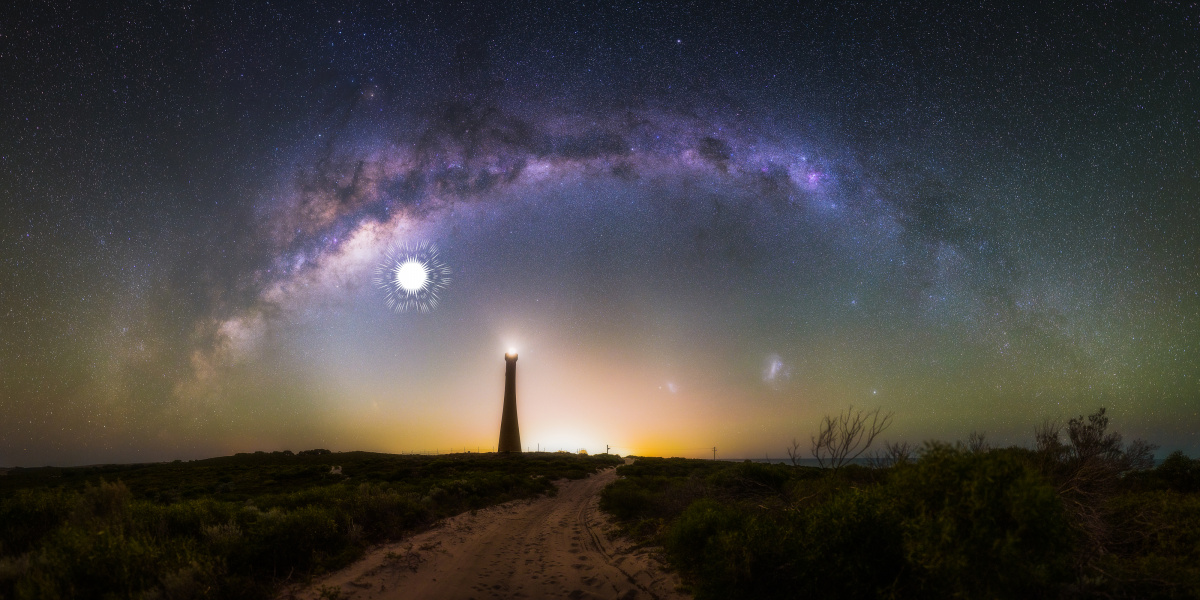
A radio telescope in remote Western Australia has discovered the remnants of 27 massive stars in the Milky Way that exploded with overwhelming brightness as they died.
One of these newly discovered supernova remnants lies in an empty region of space, far out of the plane of our galaxy – and despite being quite young, is also very faint. Yet it may have been seen by human eyes when it exploded.
Astrophysicist Dr Natasha Hurley-Walker, from the Curtin University node of the International Centre for Radio Astronomy Research (ICRAR), who created the images using the Pawsey Supercomputing Centre in Perth, said in a prepared statement:
“It’s the remains of a star that died less than 9000 years ago, meaning the explosion could have been visible to Indigenous people across Australia at that time,” she said.
It may be possible to know who saw it
An expert in cultural astronomy, Associate Professor Duane Hamacher from the University of Melbourne, in a prepared statement said some Aboriginal traditions do describe bright new stars appearing in the sky, but we don’t know of any definitive traditions that describe this particular event.

This 28 image photomosaic captures the arch of the milky way over the Guilderton Lighthouse in Western Australia, and the Large and Small Magellanic Clouds. The location of a supernova that would have exploded 9,000 years ago and been visible in the night sky is shown in the image. Image: Paean Ng / Astrordinary Imaging.
“However, now that we know when and where this supernova appeared in the sky, we can collaborate with Indigenous elders to see if any of their traditions describe this cosmic event. If any exist, it would be extremely exciting,” he said.
According to Dr Hurley-Walker, the 27 dead stars would have been eight or more times more massive than our Sun before their dramatic destruction thousands of years ago – and their discovery is part of a relatively new and beautifully strange view of our galaxy as captured by the Murchison Widefield Array (MWA) telescope.

These are the 27 newly-discovered supernova remnants—the remains of stars that ended their lives in huge stellar explosions thousands to hundreds of thousands of years ago. The radio images trace the edges of the explosions as they continue their ongoing expansion into interstellar space. Some are huge, larger than the full moon, and others are small and hard to spot in the complexity of the Milky Way. Image: Dr Natasha Hurley-Walker (ICRAR/Curtin) and the GLEAM Team.
There are different ways of seeing the Milky Way. There is what’s visible to the human eye, but also microwaves, X-rays, gamma rays, infra red and radio waves. You can see all of them here as part of GLEAM, the GaLactic and Extragalactic All-sky survey.
This is what we’d see, if we could see radio waves
The images from the Murchison Widefield Array, as published here, show what our galaxy would look like if human eyes could see radio waves.
“This new view captures low-frequency radio emission from our galaxy, looking both in fine detail and at larger structures,” Dr Hurley-Walker said.
“Our images are looking directly at the middle of the Milky Way, towards a region astronomers call the Galactic Centre.”

This image shows a new view of the Milky Way from the Murchison Widefield Array, with the lowest frequencies in red, middle frequencies in green, and the highest frequencies in blue. Huge golden filaments indicate enormous magnetic fields, supernova remnants are visible as little spherical bubbles, and regions of massive star formation show up in blue. The supermassive black hole at the centre of our galaxy is hidden in the bright white region in the centre. Image: Dr Natasha Hurley-Walker (ICRAR/Curtin) and the GLEAM Team
“Essentially, different objects have different ‘radio colours’, so we can use them to work out what kind of physics is at play.”
The survey has a resolution of two arcminutes (about the same as the human eye) and maps the sky using radio waves at frequencies between 72 and 231 MHz (FM radio is near 100 MHz).
“It’s the power of this wide frequency range that makes it possible for us to disentangle different overlapping objects as we look toward the complexity of the Galactic Centre,” Dr Hurley-Walker said.
“Essentially, different objects have different ‘radio colours’, so we can use them to work out what kind of physics is at play.”
